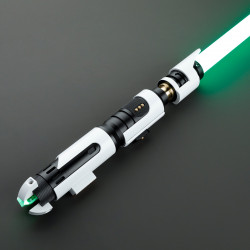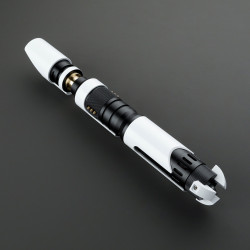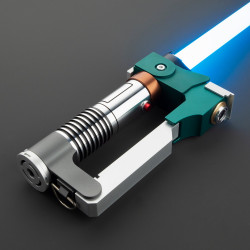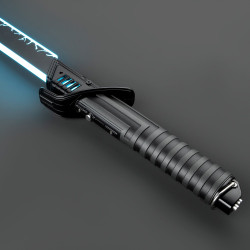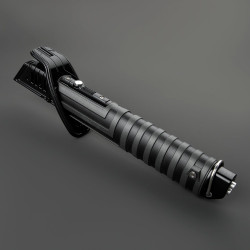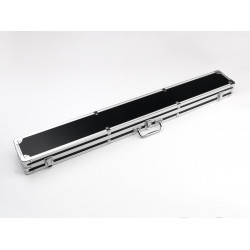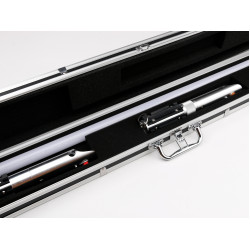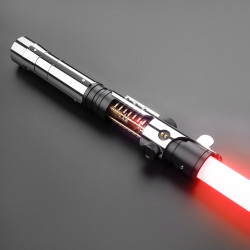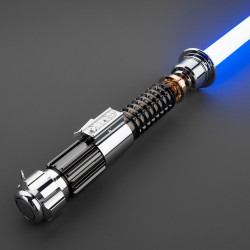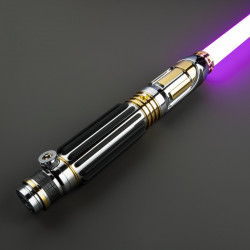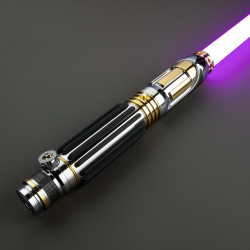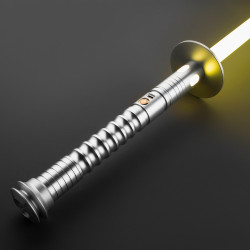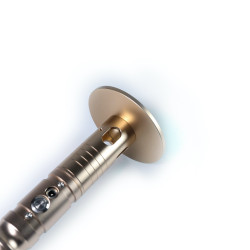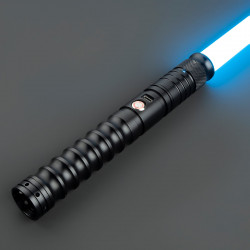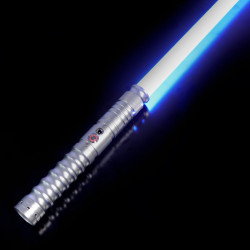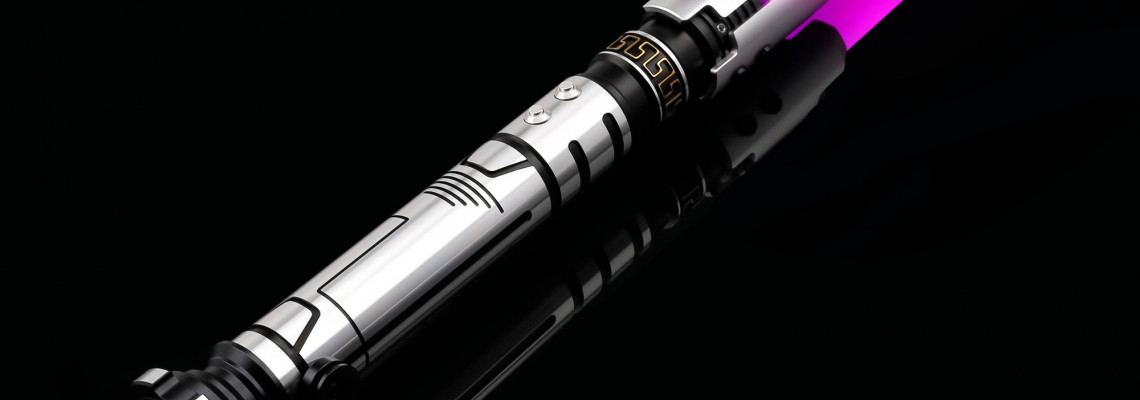
Lightsaber Forms and Combat Tips
For both Jedi and Sith, a thorough grasp of lightsaber forms and battle can make the difference between survival and loss in the sometimes hazardous galaxy. Despite their reputation for prioritizing peaceful diplomacy, the Jedi are aware of the significance of lightsaber combat forms and how each might be used to their advantage in a battle. All types of lightsaber fighting are recognized for their historical and practical significance, even though some techniques have become obsolete as styles have changed. The seven types of lightsaber battle, from the most basic to the most complex, are covered in this tutorial.
The Way of the Saber: 7 Lightsaber Forms
Form I: Shii-Cho (The Determination Form)
A Jedi or Sith apprentice who is learning lightsaber tactics is taught to identify all seven types of fighting. The Jedi Order created Shii-Cho, often referred to as style I, the Determination Form, or the Way of the Sarlaac, as the earliest and most basic style of lightsaber combat because it was created before lightsabers were widely used. Since Shii-Cho is the most fundamental, it is still taught to young Jedi. This approach is known to be employed when all other combat methods have failed, although it is no longer the Jedi Knights' and Masters' preferred method. Shii-Cho is mainly used for defense because of its early roots, which make it unsuited for lightsaber-to-lightsaber combat.
Shii-Cho practitioners Kit Fisto and Obi-Wan Kenobi are well-known. Additionally, in Star Wars Episode IV: A New Hope, Luke Skywalker can be seen practicing Shii-Cho on board the Millennium Falcon while being instructed by Kenobi.
Form II: Makashi (The Contention Form)
The Jedi required a combative form that was both offensive and defensive, something better suited for lightsaber-to-lightsaber contact, as Form I became obsolete with the rise of the Dark Jedi and Sith Lords. Many thereafter adopted the Makashi lightsaber form, sometimes referred to as Form II or the Contention Form. This elegant and strategic Form outsmarts opponents by using balance and intricate footwork. Since opponents can only use one hand when in the Makashi form, the lightsaber user may typically disable their opponent without killing them. Despite being made especially for lightsaber combat, Makashi Form was shown to be ineffective against ranged weapons and blasters.
Jedi Master Ki-Adi-Mundi, Asajj Ventress, and Count Dooku are all recognized Makashi Form practitioners.
Form III: Soresu (The Resilience Form)
The Makashi style of warfare quickly became outdated as blasters gained popularity and galactic combat evolved. Form III, also called Soresu, the Resilience Form, or the Way of the Mynock, took the place of Makashi (Form II), in contrast to Shii-Cho, which Jedi still utilize. It is well known that this lightsaber combat method is the most durable and the pinnacle of the Jedi's non-aggressive ideology. Soresu expert Obi-Wan Kenobi was reputed to be able to glide gracefully and parry any blow.
Its defensive strategies were a significant factor in this method's rise to prominence. A Jedi must be able to defend themselves from all sides, and Soresu, a defensive-first lightsaber fighting style, is the ideal strategy for both defending oneself in a duel and deflecting possible shots. Practitioners of this lightsaber form are advised to remain defensive and only strike when they perceive an opening. Luke Skywalker demonstrated his mastery of Soresu while repelling Scout Troopers on Endor, despite the fact that many Jedi fighters employ this technique.
Form IV: Ataru (The Aggression Form)
Form IV, sometimes referred to as Ataru or the Aggression Form, gained popularity as lightsaber wielders began to become more proficient and strong within the Force. The Old Republic and even the Mandalorian Wars saw the use of Ataru fighting methods. Ataru is considered the second most kinetically active combat form, behind Form VII, and became the preferred fighting style for many Sith due to its aggressive character. Due to its heavy reliance on Force-assisted acrobatics, the Ataru style is primarily influenced by the fighter's level of Force proficiency.
Ataru is especially effective in one-on-one lightsaber battles, much like Makashi (Form II). This Form emphasizes the value of fighting on the attack and is based on a combination of strength, speed, and agility. Using Form IV, Yoda and Qui-Gon Jinn were two of the most proficient Jedi prior to the collapse of the Old Republic. When Yoda battles Darth Sidious in Star Wars Episode III: Revenge of the Sith, he demonstrates his mastery of the Ataru lightsaber combat form. Novices of the Force should not or cannot employ Ataru as a fighting method. Only those who can completely let the Force flow freely through them can use this lightsaber method, which necessitates in-depth Force expertise.
Form V: Shien & Djem So (The Perseverance Form)
A skilled opponent will be able to identify the two main disciplines of Shien and Djem So, also referred to as the Way of the Krayt Dragon or the Perseverance Form, when viewing Form V of a lightsaber battle. Form V developed from Form III as a way to allow the fighters to be on the offensive as much as to defend themselves. Shien, the traditional Form of Form V, is mainly employed in distance warfare, such as deflecting blaster rounds. Djem So, however, was explicitly created for lightsaber-to-lightsaber fighting. The fundamental idea of both Shien and Djem So is to counterattack your opponent by using their attacks against you, with a focus on strong blows, fast movements, and efficient defensive strategies.
Although some Jedi believed that the hostility employed in this Form was not genuine to the Jedi method, this lightsaber form, like many others, is used by both Sith and Jedi. Form V is preferred by many people who wield huge lightsabers since it requires fewer gymnastics than some of the other offensive forms. Anakin Skywalker, Adi Gallia, and Ahsoka Tano are well-known Shien and Djem So practitioners.
Form VI: Niman (The Moderation Form or the Diplomat's Form)
In order to consolidate several of the earlier forms into a single fighting style, Form VI—also known as Niman, the Moderation Form, the Diplomat's Form, or the Way of the Rancor—was created. By fusing these strategies, Form VI became the first to have neither a unique fighting style nor a glaring weakness, creating a balance that made it highly versatile and popular with many Jedi.
Lightsaber wielders typically train in the Niman style of combat alongside Force-based combat because this method lacks specialization. Furthermore, Jar' kai—not a lightsaber form per se, but a fighting tactic that uses two lightsabers—rose to prominence as a result of Niman. The Grand Inquisitor and Darth Maul are well-known practitioners of Niman.
Form VII: Juyo / Vaapad (The Ferocity Form)
The seventh Form of the lightsaber battle, known as the Ferocity Form, Vaapad, Juyo, or Form VII, finally appeared. Form VII is the most aggressive and final known Form of lightsaber fighting. Since Form VII is the most aggressive, Jedi Master Mace Windu is the most well-known Jedi to employ this style of fighting. Windu is among the few who can master Vaapad since, in addition to being the most aggressive, only the most Force-sensitive people can effectively execute this Form.
Master Windu utilized Form VII to defeat Darth Sidious, and he won the battle. Master Windu had the chance to eliminate this formidable Sith after disarming Sidious, but he was aware that this was not the Jedi method of killing an unarmed combatant. Windu resisted, and as a result, his death was caused by his passion for upholding the Jedi Way rather than his fighting prowess.
Combining Lightsaber Fighting Styles
Every lightsaber fighting style will typically overlap to some extent with another kind. Many different lightsaber forms may be utilized during a duel or lightsaber battle, while each combat form has a unique appearance. You have to consider a lot of factors while choosing which combat style to employ against your opponent.
A lot of Jedi Knights are taught to fight defensively, trying to save lives wherever they can. As a result, they carefully evaluate how to maximize effectiveness with the least amount of casualties when choosing their war strategy. A Sith or Dark Jedi will typically select a battle strategy based on which lightsaber form will work best against their opponent.
Additional Lightsaber Combat Tips
A lightsaber blade is generally believed to be invulnerable to anything other than another lightsaber blade. It's not true. Many materials can't withstand the beam of a lightsaber. For example, lightsabers cannot work in water if submerged in it. After the utility is cut off, the beam will start to sizzle.
Ultra chrome is another resistant substance. Diffusing the energy across its surface, this material could block lightsaber blades, blasters, and projectile weapons. Cortosis is another restraint material. This is the most widely used restraint and can deflect short lightsaber blades. Please stay away from these substances at all costs since they will negatively impact your lightsaber and performance.
It might be challenging to recall basic tactics that can be used to improve the outcome of a conflict when in action. By using these strategies, you can become more like a true Jedi.
- Survival Mindset: This is the key to the first lightsaber battle tactic. Your chances of winning will increase if you adopt a survival mindset, even if you are only sparring. Instead, duel as though every move will get you one step closer to your ultimate objective: victory, rather than merely putting on a show with methodical moves and steps.
- Second, always keep in mind that your lightsaber is more than simply a piece of metal and plastic; it is a beautiful weapon. Learn how to use your lightsaber's several leverage points so you can hit your opponent with power and determination.
- Technique of Practice: Third, apply fundamental fencing skills throughout a duel, such as feinting, dodging, and pausing. Launching one or more fictitious attacks on your opponent is known as fainting. Applying these basic guidelines will make your combat a lot more pleasurable, even though it's easy to enter into an unending cycle of strike on strike on strike.
- Seek to Disarm: Fourth, when a fighter approaches their opponent too closely, they cease battling. Rather than giving up, use a disarming strategy to incapacitate your opponent and win.
- Last but not least, pay attention to your footwork! The best lightsaber fights need superb footwork. Despite the fact that many lightsaber battles usually feature fighters standing with their feet set immobile, this can quickly cause one to lose a leg and look rigid and incompetent. During a fight, moving about might help you maintain your survival mentality and provide chances to hit or disable your opponent.
Safety First – Start with Shii-Cho
To guarantee the safety of all members, specific procedures must be performed while joining one of the global lightsaber combat clubs. Similar to how Jedi younglings learn the lightsaber technique in the Shii-Cho form, several groups demand that the Shii-Cho form be mastered before utilizing more complex lightsaber fighting forms.
The most authentic approach to learning the art of lightsaber combat is to start with Shii-Cho, which is also the safest way for novices to practice their lightsaber skills.
S.A.B.E.R.S
Use the abbreviation S.A.B.E.R.S. to practice the safest lightsaber fighting techniques.
- S stands for security. Before leaving a battle, make sure your saber is secure. Look for any loose straps, grips, or blades.
- A represents consciousness. Learn your surroundings and be mindful of items that could obstruct your combat. Nothing is worse than inadvertently injuring your blade by striking an invisible object.
- B stands for batteries. Every time you depart for a convention or war, bring a fresh supply of batteries. A saber without light is not what you would desire!
- Experience is represented by the letter E. Whatever saber you possess, you will have a fantastic experience with it. Learn about your saber's many features and peculiarities. Your performance will be better the more lightsaber practice you have.
- R stands for restraint. Avoid swinging your lightsaber wildly and aimlessly. Random dueling also has the potential to cause harm. Be aware of the amount your saber can withhold and take appropriate action.
- S is an acronym meaning sharing. Talk about your lightsaber ownership experience and the joy it offers to you and your loved ones. Encourage others to use a weapon as graceful as yours. You can impart your knowledge to the upcoming generation of Force users, whether you are a Jedi or Sith.
Train in the 7 Lightsaber Forms with Combat-Ready Sabers from LaserPointerWorld.
Many fans of saber-dueling opt to use LaserPointerWorld's authentic, long-lasting, battle-ready lightsabers. Despite the fact that you can personalize your lightsaber in countless ways, all of our products share one quality. With character-inspired lightsaber models, many of our designs closely resemble those you've seen in the Star Wars films, so some of the sabers you'll find at LaserPointerWorld may look familiar. Our goods have repeatedly been approved by combat artists and put to the test in combat situations.
Ready for Battle
Practice the seven types of lightsaber battles and select the fighting style that works best for you to maximize your next lightsaber duel. To guarantee a safe struggle, don't forget also to practice the S-A-B-E-R-S safety techniques. Purchase a high-quality lightsaber that won't break in the middle of a battle and endanger your life. After that, figure out your fighting style, locate other fantastic Star Wars fans, and test your force prowess!
May the Force always be with you!
